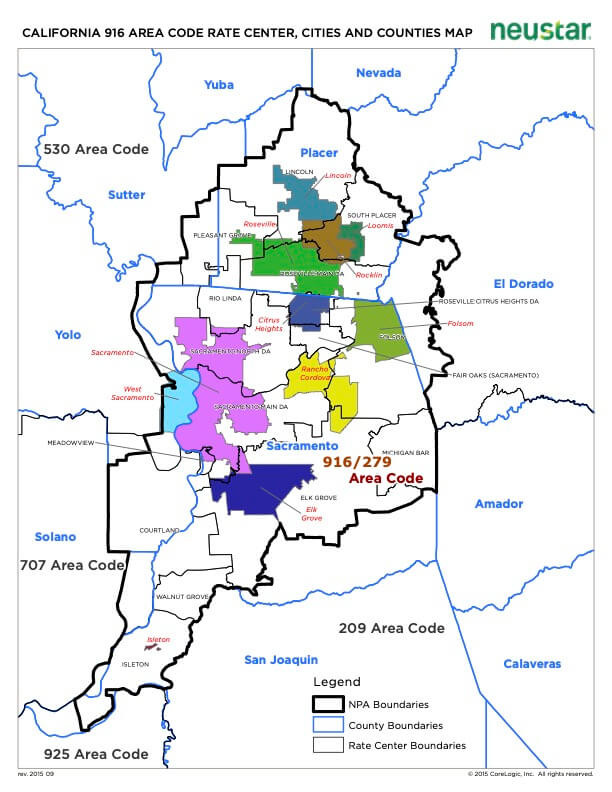The 916 area code holds a significant place in telecommunications history as one of California’s original three area codes, introduced in 1947 when area codes were first established across the United States and Canada under the North American Numbering Plan (NANP). Alongside 415 and 213, area code 916 marked the beginning of a structured system to manage telephone numbers in the rapidly growing state of California.
Interestingly, the initial configuration of the 916 area code in Northern California was different from its current boundaries. It originally extended to the Oregon border and encompassed areas like Eureka and the north coast, notably excluding Sacramento itself. Today, 916 stands out as the only one of the original area codes in California that does not serve any of its initially assigned territory, reflecting significant shifts in population and telecommunications infrastructure over the decades.
The Significance of the Middle Digit ‘1’ in Area Codes
In the original North American Numbering Plan design, the middle digit in an area code served a specific purpose. Area codes assigned to states or Canadian provinces that were allocated only a single area code for the entire region were designated with a ‘0’ as the middle digit. Conversely, regions requiring multiple area codes, like California with 916, 415, and 213, were assigned area codes with a ‘1’ as the middle digit. This system helped in the early routing and management of calls.
Furthermore, the numerical value of the area codes themselves was also strategically considered. Lower numbers, such as 213, were favored for highly populated areas because rotary dialing, the prevalent technology at the time, was more time-consuming for larger numbers. Lower numbers minimized the ‘pulls’ required on a rotary dial, making dialing quicker in densely populated zones.
Area Code 916 Location: Serving the Greater Sacramento Region
Currently, the 916 area code is primarily associated with the greater Sacramento region in Northern California. This includes a substantial geographical area spanning parts of El Dorado, Solano, Sutter, Yolo, Placer, and Sacramento counties. It serves a multitude of cities within this region, including the state capital, Sacramento, as well as West Sacramento, Rancho Cordova, Elk Grove, Citrus Heights, Rocklin, Roseville, Fair Oaks, Folsom, and El Dorado Hills.
The map below clearly outlines the numbering plan area (NPA) coverage boundary for the 916 area code with a bolded black border, providing a visual representation of its service area.
 916 Area Code Boundary Map
916 Area Code Boundary Map
Source: California Public Utilities Commission
The 916 area code operates within the Pacific Time Zone (PT) of the United States, identified in the IANA time zone database as ‘America/Los_Angeles.’ This time zone is crucial for understanding call times and business hours within the 916 region.
Pacific Standard Time (PST) is 8 hours behind Coordinated Universal Time (UTC-8). During Pacific Daylight Time (PDT), which is observed from the second Sunday in March to the first Sunday in November, the time is adjusted to 7 hours behind UTC (UTC-7).
The Introduction of the 279 Overlay Area Code
As the Sacramento region grew, the California Public Utilities Commission (CPUC) projected that the 916 area code would exhaust its available prefixes by early 2018. In response to this impending shortage, the CPUC approved and implemented a new area code, 279, as an overlay to the existing 916 area code in September 2017.
The overlay approach meant that instead of splitting the 916 area code geographically and assigning new numbers in certain areas to a new area code, the 279 area code was introduced to operate within the same geographical region as 916. This avoided the need to change the area code for existing 916 numbers. However, it necessitated a significant change in dialing procedures.
Since September 2017, all calls made within the 916 service area, even those within the same area code, require the use of the area code. Dialing only seven digits results in an intercept message, prompting the caller to dial again with the area code. For landlines, dialing ‘1’ before the area code is also required, while mobile carriers typically do not need the ‘1’. This ten or eleven-digit dialing requirement is a standard consequence of area code overlays and had several implications for businesses and residents.
For example, preprogrammed speed dial numbers on telephones within the 916 area that were saved as seven-digit numbers needed to be updated to include the 916 area code (e.g., from 555-2368 to 916-555-2368). Similarly, call forwarding settings and programmed numbers in devices like burglar alarms and point-of-entry systems also required reprogramming to include the area code to ensure proper functionality. The transition to mandatory ten or eleven-digit dialing with the 279 overlay was a significant adjustment for everyone within the 916 and 279 area codes, emphasizing the importance of including the area code for all calls, even local ones.

